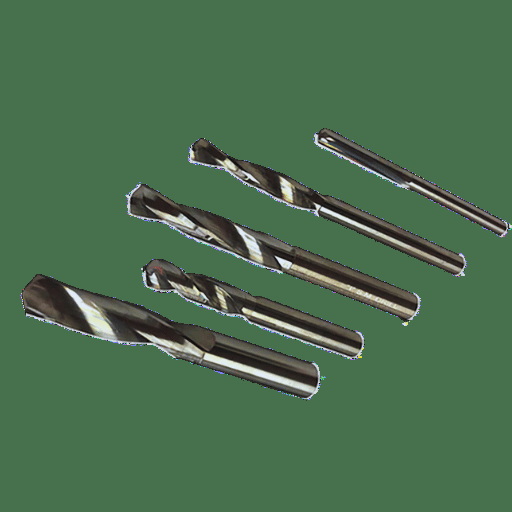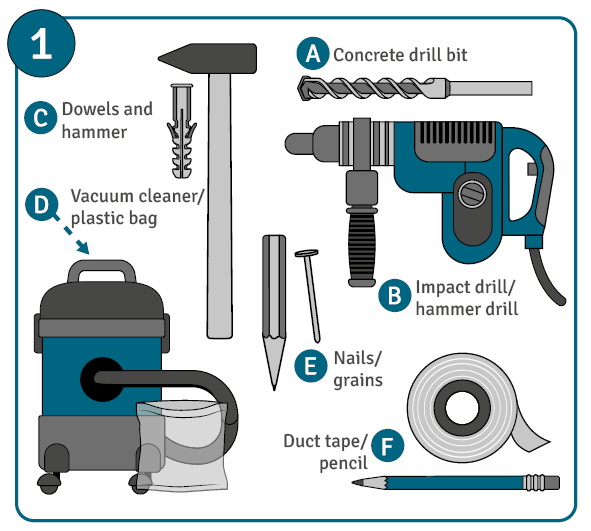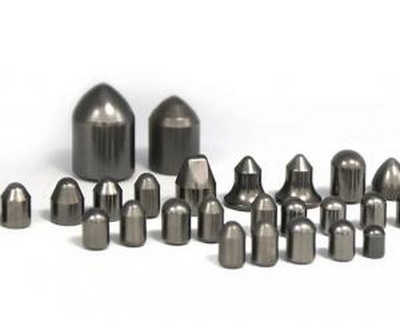Content Menu
● Introduction to Tungsten Carbide
>> Chemical Composition and Structure
● Corrosion Resistance of Tungsten Carbide
>> Types of Tungsten Carbide and Their Corrosion Resistance
● Applications of Corrosion-Resistant Tungsten Carbide
>> Chemical Equipment
>> Marine Engineering
>> Aerospace and High-Temperature Applications
>> Jewelry and Consumer Products
● Practical Examples and Case Studies
● Advanced Manufacturing Techniques
>> Vacuum Sintering
>> Hot Isostatic Pressing (HIP)
● Challenges and Future Developments
>> Coatings and Surface Treatments
>> Composite Materials
● Conclusion
● FAQ
>> 1. What is the primary factor contributing to tungsten carbide's corrosion resistance?
>> 2. How does the type of binder affect the corrosion resistance of tungsten carbide?
>> 3. What are some common applications of corrosion-resistant tungsten carbide?
>> 4. How does tungsten carbide compare to other materials in terms of corrosion resistance?
>> 5. Can surface treatments enhance the corrosion resistance of tungsten carbide?
● Citations:
Tungsten carbide is a highly versatile material known for its exceptional hardness, wear resistance, and thermal properties, making it a crucial component in various industrial applications. One of its most significant advantages is its corrosion resistance, which plays a vital role in ensuring the longevity and performance of equipment in harsh environments. This article delves into the corrosion resistance of tungsten carbide, exploring its chemical composition, types, applications, and practical examples.

Introduction to Tungsten Carbide
Tungsten carbide is a chemical compound composed of tungsten and carbon atoms, typically in the form of WC (tungsten carbide) and sometimes W2C (tungsten semicarbide). It is often combined with a metallic binder, such as cobalt or nickel, to enhance its toughness and corrosion resistance. This combination creates a cermet (ceramic-metallic composite) that combines the high hardness of ceramic tungsten carbide with the ductility of metallic binders.
Chemical Composition and Structure
The chemical composition of tungsten carbide is crucial for its corrosion resistance. The WC phase provides a natural barrier against corrosive media due to its high hardness and chemical stability. The addition of binders like cobalt or nickel not only enhances toughness but also contributes to forming a protective oxide layer when exposed to corrosive environments.
Corrosion Resistance of Tungsten Carbide
Tungsten carbide exhibits strong chemical stability, resisting erosion by most acids and alkalis. It performs well in weak acid, weak alkali, and neutral environments, maintaining stability over long periods even in harsh conditions. However, its corrosion resistance can vary depending on the specific composition and binder used.
Types of Tungsten Carbide and Their Corrosion Resistance
1. WC-Co Tungsten Carbide: This type is more effective in acidic environments due to the formation of a dense oxide film on its surface. However, it is less effective in alkaline environments.
2. WC-Ni Tungsten Carbide: Nickel-based tungsten carbide shows strong corrosion resistance in alkaline solutions. The nickel element forms a stable oxide film, protecting the alloy surface.
3. WC-10Ni3Al Tungsten Carbide: This composition exhibits excellent corrosion resistance in acidic, alkaline, and neutral salt solutions. Its unique structure allows the formation of stable oxide and hydroxide films, effectively resisting corrosive media.
Applications of Corrosion-Resistant Tungsten Carbide
Tungsten carbide's corrosion resistance makes it ideal for various industrial applications, particularly in environments where exposure to corrosive substances is common.
Chemical Equipment
In the chemical industry, tungsten carbide is used to manufacture components that withstand corrosion from various chemical media, ensuring long-term stable operation of equipment. This includes valves, pumps, and other machinery parts that are frequently exposed to corrosive chemicals.
Marine Engineering
In marine environments, tungsten carbide is used to produce corrosion-resistant components and equipment. Its ability to resist seawater corrosion makes it a preferred material for marine applications, such as propellers and other underwater components.
Aerospace and High-Temperature Applications
Tungsten carbide's thermal stability and corrosion resistance also make it suitable for aerospace components, where high temperatures and corrosive conditions are common. It is used in rocket nozzles and other high-temperature components due to its ability to withstand extreme conditions.
Jewelry and Consumer Products
In consumer applications, tungsten carbide is used in jewelry due to its durability and resistance to corrosion, making it ideal for everyday wear. Its hardness also ensures that jewelry pieces maintain their appearance over time.

Practical Examples and Case Studies
1. Cutting Tools: Tungsten carbide is widely used in cutting tools due to its hardness and wear resistance. Its corrosion resistance ensures that tools remain effective even in environments with chemical exposure.
2. Jewelry: As mentioned, tungsten carbide jewelry is popular for its durability and resistance to corrosion, making it suitable for daily wear.
3. Marine Propellers: Tungsten carbide-coated propellers are used in marine vessels to enhance their resistance to seawater corrosion, improving efficiency and longevity.
4. Chemical Pumps: In chemical processing plants, tungsten carbide components are used in pumps to handle corrosive fluids, ensuring reliable operation and reducing maintenance costs.
Advanced Manufacturing Techniques
Recent advancements in manufacturing techniques have further enhanced the corrosion resistance of tungsten carbide. Techniques such as vacuum sintering and hot isostatic pressing (HIP) allow for the production of tungsten carbide with improved density and uniformity, which enhances its overall corrosion resistance.
Vacuum Sintering
Vacuum sintering involves heating the tungsten carbide mixture in a vacuum environment, which helps remove impurities and achieve higher density. This process improves the material's chemical stability and resistance to corrosion.
Hot Isostatic Pressing (HIP)
HIP involves applying high pressure and temperature to the sintered tungsten carbide, further densifying the material and eliminating any residual porosity. This results in a more uniform structure with enhanced corrosion resistance.
Challenges and Future Developments
Despite its excellent corrosion resistance, tungsten carbide faces challenges in certain environments, such as high-temperature oxidation or exposure to strong acids. Future developments focus on improving its performance in these conditions through advanced coatings or composite materials.
Coatings and Surface Treatments
Applying corrosion-resistant coatings to tungsten carbide surfaces can further enhance its resistance to specific corrosive media. These coatings can be tailored to provide additional protection in environments where tungsten carbide's natural resistance is insufficient.
Composite Materials
Research into composite materials that combine tungsten carbide with other corrosion-resistant materials is ongoing. These composites aim to leverage the strengths of different materials to create components with superior corrosion resistance and mechanical properties.
Conclusion
Tungsten carbide's corrosion resistance is a critical property that enhances its durability and performance in various industrial and consumer applications. Its ability to withstand corrosive environments makes it a preferred material for manufacturing components that require high chemical stability. By understanding the composition and types of tungsten carbide, industries can optimize its use in environments where corrosion resistance is paramount.

FAQ
1. What is the primary factor contributing to tungsten carbide's corrosion resistance?
Tungsten carbide's corrosion resistance is primarily due to its chemical composition and the formation of protective oxide films on its surface, especially in the presence of binders like cobalt or nickel.
2. How does the type of binder affect the corrosion resistance of tungsten carbide?
The type of binder used in tungsten carbide, such as cobalt or nickel, significantly affects its corrosion resistance. Cobalt-based tungsten carbide performs well in acidic environments, while nickel-based compositions are more effective in alkaline conditions.
3. What are some common applications of corrosion-resistant tungsten carbide?
Corrosion-resistant tungsten carbide is commonly used in chemical equipment, marine engineering, aerospace components, and cutting tools due to its ability to withstand corrosive environments.
4. How does tungsten carbide compare to other materials in terms of corrosion resistance?
Tungsten carbide generally offers better corrosion resistance than many steel alloys, especially in environments with weak acids or alkalis. However, it may be less effective against strong acids like hydrofluoric acid.
5. Can surface treatments enhance the corrosion resistance of tungsten carbide?
Yes, surface treatments such as applying corrosion-resistant coatings can further enhance tungsten carbide's corrosion resistance by creating an additional protective barrier against corrosive media.
Citations:
[1] https://www.carbide-part.com/blog/exploration-of-the-corrosion-resistance-of-tungsten-carbide/
[2] https://www.carbide-part.com/blog/exploring-the-advantages-of-tungsten-carbide-excellent-corrosion-resistance/
[3] https://shop.machinemfg.com/the-pros-and-cons-of-tungsten-carbide-a-comprehensive-guide/
[4] https://www.mdpi.com/1996-1944/13/12/2719
[5] https://www.alamy.com/stock-photo/tungsten-carbide.html
[6] https://en.wikipedia.org/wiki/Tungsten_carbide
[7] https://www.jlsmoldparts.com/talking-corrosion-resistance-tungsten-carbide-grades/
[8] https://www.ipsceramics.com/technical-ceramics/tungsten-carbide/
[9] https://create.vista.com/photos/tungsten-carbide/
[10] https://www.linde-amt.com/resource-library/articles/tungsten-carbide
[11] https://www.carbide-part.com/es/blog/an-in-depth-analysis-of-tungsten-carbides-corrosion-resistance/
[12] https://www.linkedin.com/pulse/corrosion-resistance-tungsten-carbide-shijin-lei
[13] https://thinkstewartville.com/2024/09/23/can-tungsten-rings-rust-exploring-durability-corrosion-resistance-tungsten-jewelry/
[14] https://www.hyperionmt.com/en/products/Wear-Parts/corrosion-resistant-carbide/
[15] https://www.yatechmaterials.com/en/technology/what-is-corrosion-resistant-tungsten-carbide/
[16] https://www.istockphoto.com/photos/tungsten-carbide
[17] http://www.tungsten-carbide.com.cn/tungsten-carbide-properties.html
[18] https://cen.acs.org/materials/Chemistry-Pictures-Tungsten-carbide-slice/103/web/2025/02
[19] https://www.boyiprototyping.com/materials-guide/does-tungsten-rust/
















